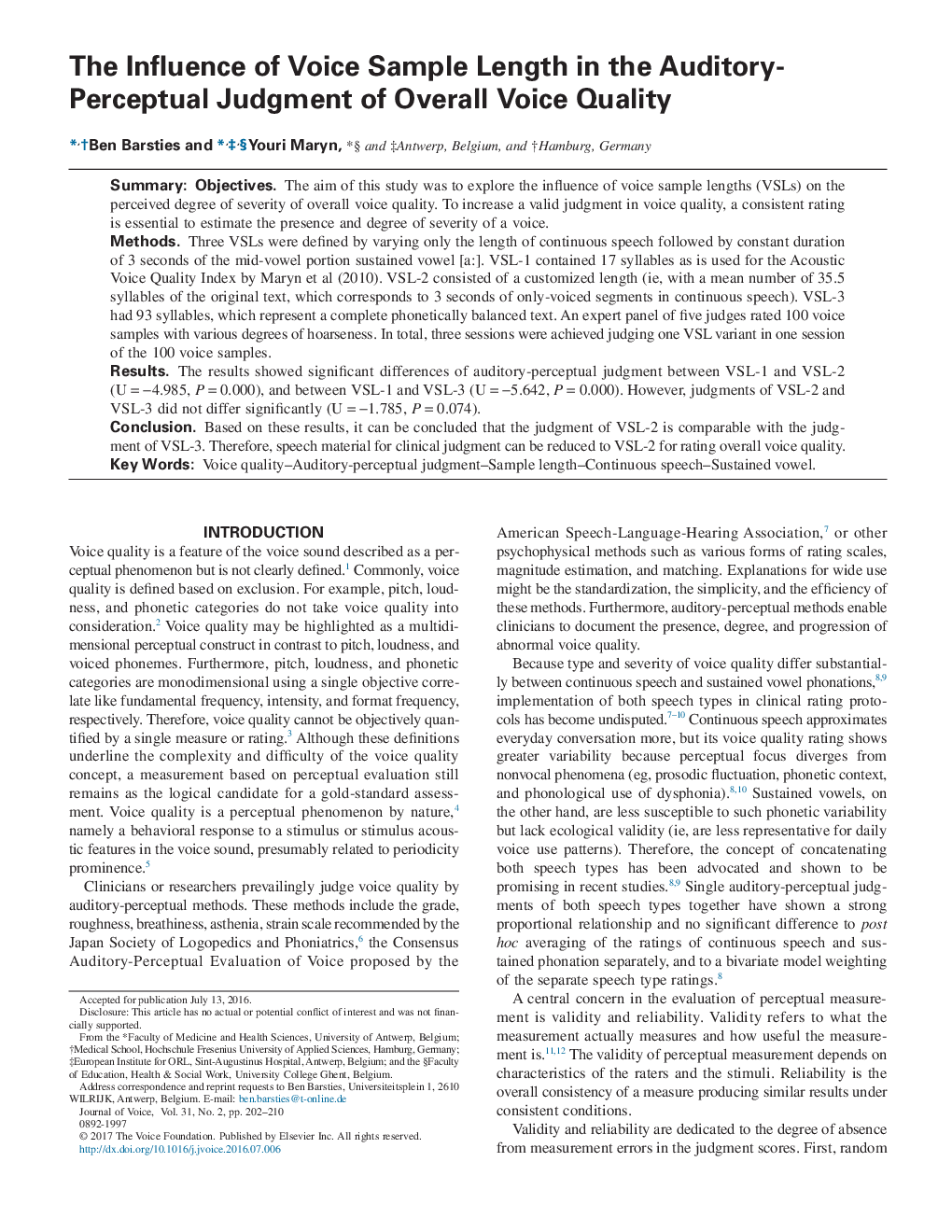| Article ID | Journal | Published Year | Pages | File Type |
|---|---|---|---|---|
| 5124395 | Journal of Voice | 2017 | 9 Pages |
SummaryObjectivesThe aim of this study was to explore the influence of voice sample lengths (VSLs) on the perceived degree of severity of overall voice quality. To increase a valid judgment in voice quality, a consistent rating is essential to estimate the presence and degree of severity of a voice.MethodsThree VSLs were defined by varying only the length of continuous speech followed by constant duration of 3 seconds of the mid-vowel portion sustained vowel [a:]. VSL-1 contained 17 syllables as is used for the Acoustic Voice Quality Index by Maryn et al (2010). VSL-2 consisted of a customized length (ie, with a mean number of 35.5 syllables of the original text, which corresponds to 3 seconds of only-voiced segments in continuous speech). VSL-3 had 93 syllables, which represent a complete phonetically balanced text. An expert panel of five judges rated 100 voice samples with various degrees of hoarseness. In total, three sessions were achieved judging one VSL variant in one session of the 100 voice samples.ResultsThe results showed significant differences of auditory-perceptual judgment between VSL-1 and VSL-2 (Uâ=ââ4.985, Pâ=â0.000), and between VSL-1 and VSL-3 (Uâ=ââ5.642, Pâ=â0.000). However, judgments of VSL-2 and VSL-3 did not differ significantly (Uâ=ââ1.785, Pâ=â0.074).ConclusionBased on these results, it can be concluded that the judgment of VSL-2 is comparable with the judgment of VSL-3. Therefore, speech material for clinical judgment can be reduced to VSL-2 for rating overall voice quality.
